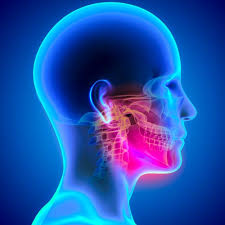
What is Temporomandibular joint dysfunction?
Temporomandibular joint dysfunction (TMJ) behaves like a sliding hinge, joining your jawbone with your skull. TMJ disorders can cause pain in joints of jaw and in the muscle that controls the movement of jaw.
The main cause of a person’s TMJ disorder is usually difficult to determine. Your pain might be due to a combination of multiple factors such as genetics, arthritis or jaw injury. Sometimes people who are suffering from jaw pain also tend to grind their teeth, although many people habitually grind or clench their teeth and never develop TMJ disorders. In most of the cases, the pain and discomfort which is associated with TMJ disorders is temporary and it can be relieved with some self-managed care or treatments which are not surgical. Surgery is usually the last resort after conservative measures have already failed, but some people with TMJ disorders may get benefit from surgical treatments.
Causes
There are many possible causes of TMJ disorders. Some known causes include:
Symptoms
Signs and symptoms of TMJ disorders may include:
Risk factors
Factors that increase the risk of developing TMJ disorders include:
Physical therapy for Temporomandibular joint dysfunction
Physical therapist at SOS PHYSIO can help you restore the natural movement of your jaw and decrease your pain. Based on your condition, your therapist will select treatments that will work best for you. This will help the disk move in a normal way, decrease pain, and increase motion.
There are many physical therapy treatments such as Manual therapy & Active Release Techniques (ART) are found to be very effective in treating this type of disorder.
For more information- Contact your local SOS PHYSIO clinic
Tags: Physical therapy clinic Aventura, Physical therapy clinic Sunny Isles, Physical therapy clinic Hallandale, Physical therapy clinic Hollywood, Physical therapy clinic Miami, Medicare physical therapy Hallandale, Best physical therapy clinic Aventura, Physical therapy for Temporomandibular joint dysfunction, Treatment for Temporomandibular joint dysfunction